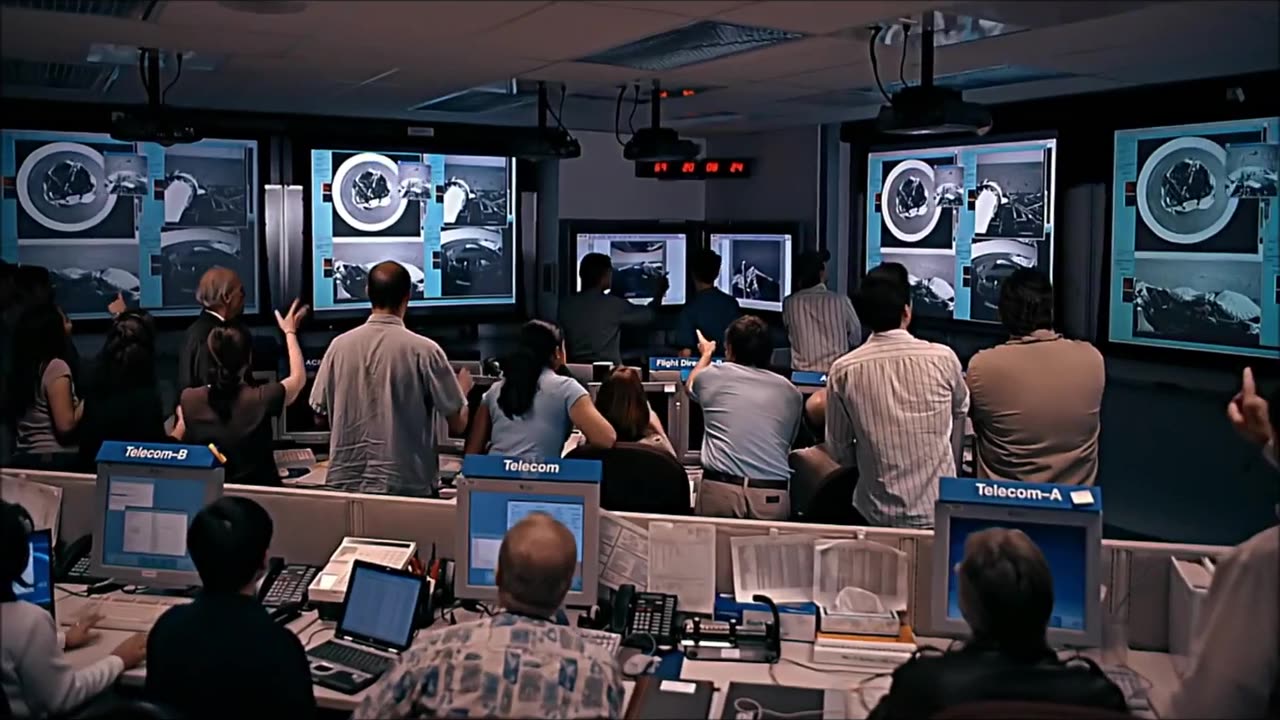Premium Only Content

★ How to Get to Mars. Very Cool!
1. Rocket Launch:
The journey to Mars begins with a spectacular rocket launch. Imagine standing by the launchpad, feeling the ground shake as a massive rocket propels itself into space. Rockets like the SpaceX Starship or NASA's Space Launch System will carry astronauts and payloads beyond Earth's atmosphere.
2. Trajectory:
Once in space, we need to chart the right trajectory to Mars. Timing is crucial, as Earth and Mars have to be aligned properly. This occurs approximately every 26 months, known as the "Mars transfer window." The spacecraft will follow a path called a Hohmann transfer orbit, optimizing fuel efficiency for the journey.
3. Spacecraft:
The spacecraft itself is a marvel of engineering. It's designed to protect astronauts from radiation and extreme temperatures, maintain life support systems, and carry all the supplies needed for the long voyage. The spacecraft might even have a futuristic "recycling" system to minimize waste.
4. Duration:
The trip to Mars can take anywhere from 6 to 9 months, depending on the specific mission and propulsion technology. During this time, astronauts must stay mentally and physically fit in the confined space of the spacecraft, making it a test of human endurance and teamwork.
5. Gravity Assist:
The spacecraft might use gravity assists from other celestial bodies, like Venus or Earth's Moon, to change its speed and trajectory, conserving fuel and allowing for course corrections.
6. Arrival at Mars:
As the spacecraft approaches Mars, the landing process is a heart-pounding experience. Technologies like the "Sky Crane" or "Red Dragon" may be used to gently lower astronauts and payloads to the Martian surface, ensuring a safe landing.
7. Surface Operations:
Once on Mars, astronauts will conduct scientific experiments, explore the Martian landscape, and test technologies that will be crucial for future missions. They'll wear futuristic spacesuits and use advanced equipment to survive in the harsh Martian environment.
8. Return to Earth:
After their mission on Mars, astronauts need to return home. They'll launch from Mars' surface, rendezvous with their return spacecraft in orbit, and then embark on a journey back to Earth. The return trip follows a similar trajectory, with precise calculations and navigation.
9. Reentry and Splashdown:
The spacecraft will re-enter Earth's atmosphere at incredible speeds, creating a stunning fireball. Advanced heat shields will protect the astronauts as they descend, eventually splashing down in the ocean, where recovery teams will retrieve them.
10. Celebrate Success:
Successfully reaching Mars and returning safely to Earth is a monumental achievement. It represents the pinnacle of human exploration, inspiring generations to come and advancing our understanding of the cosmos.
-
 8:43
8:43
Film Threat
21 hours agoTHE MONKEY | Film Threat Reviews
8.9K1 -
 15:55
15:55
TSPLY
1 day agoThe Media Is Very Afraid Of FBI Director Kash Patel
6.82K14 -
 6:57
6:57
Cooking with Gruel
17 hours agoMake Cheese Great Again
6.42K7 -
 5:17
5:17
Mrgunsngear
20 hours ago $1.84 earnedPresident Trump Has Appointed A New ATF Director
15.8K22 -
 48:17
48:17
Athlete & Artist Show
8 days ago $0.01 earnedS5E1: Chucky Announces First Kid, 4 Nations Face Off, and more!
6.35K -
 38:30
38:30
hickok45
5 hours agoSunday Shoot-a-Round # 269
10K10 -
 1:39:55
1:39:55
Squaring The Circle, A Randall Carlson Podcast
1 day ago#040 Humanity's Expansion Into The Cosmos: A New Age - Squaring The Circle
7.84K3 -
 12:54
12:54
ariellescarcella
14 hours agoYou're NOT Queer, Just Annoying And Boring
4.94K7 -
 18:57
18:57
Fit'n Fire
11 hours ago $0.03 earnedA PDW That Thumps -- Stribog SP45A3 45ACP
10.1K1 -
 2:06:23
2:06:23
Game On!
15 hours ago $0.80 earnedAnother Sunday Without Football...
21.9K1